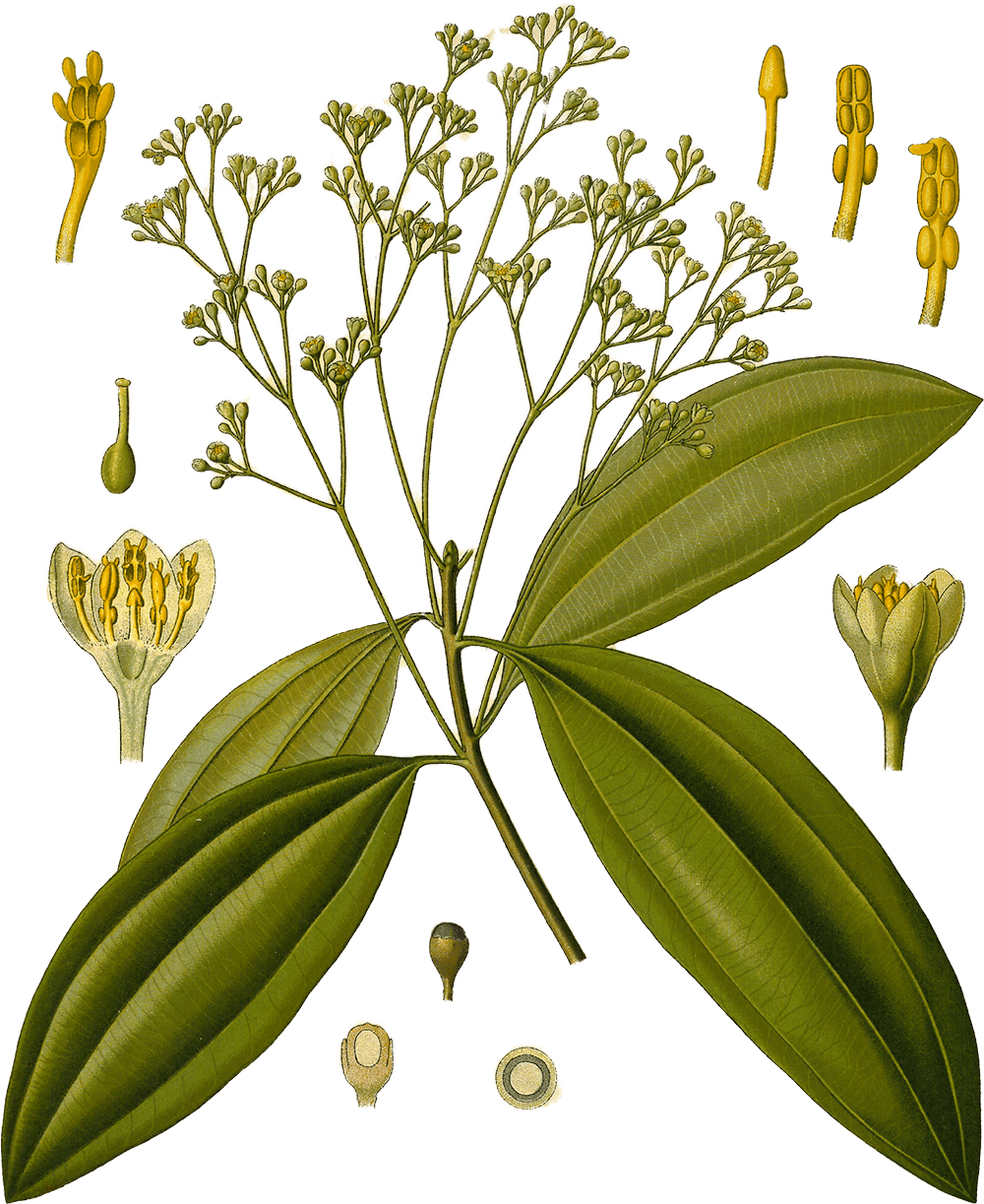Cassia
The inner bark of Southeast Asian trees, also known as cassia bark; Chinese cinnamon; cassia cinnamon; Chinese cassia. It is related to cinnamon.
English: cassia · Hungarian: kasszia (fahéj) · Arabic: سليخة · Hindi: दालचीनी · Chinese: 肉桂
Overview
| item | cassia |
|---|---|
| taxon | Cinnamomum aromaticum Nees |
| family | Lauraceae |
| regions | China, Indo-China |
| continents | Asia-Temperate, Asia-Tropical |
| part | bark; fruit |
| cultivation | Indonesia; China; Vietnam; Timor-Leste; etc. |
| botanical_database | POWO; GBIF; TROP; EOL |
CASSIA is a culinary, and medicinal spice, cultivated for its bark, and fruit. It is yielded from the plant Cinnamomum aromaticum Nees, a tree in the Lauraceae family, growing in subtropical biome, with a native range of SE. China to Vietnam.1
It is used primarily in flavor; diarrhea. Its aroma is described as pungent, cinnamon-like, with a heat index of 3.2
See more in ( Citation: POWO, 2024 POWO (2024). Plants of the world online. Facilitated by the Royal Botanic Gardens, Kew. Retrieved from http://www.plantsoftheworldonline.org/ ; Citation: Petruzzello, 2021 Petruzzello, M. (2021). List of herbs and spices. Retrieved from https://www.britannica.com/topic/list-of-herbs-and-spices-2024392 ; Citation: Wyk, 2014 Wyk, B. (2014). Culinary herbs and spices of the world. University of Chicago Press, joint publication with the Royal Botanic Gardens, Kew. ; Citation: Dalby, 2000 Dalby, A. (2000). Dangerous tastes: the story of spices. University of California Press. ; Citation: Hill, 2004 Hill, T. (2004). The contemporary encyclopedia of herbs and spices: Seasonings for the global kitchen. J. Wiley. ; Citation: Anderson, 2023 Anderson, I. (2023). The history and natural history of spices: the 5000-year search for flavour. The History Press. )
Illustration of Cinnamomum aromaticum from Köhler’s Medizinal-Pflanzen ( Citation: 1887 Köhler, H. (1887). Köhler’s Medizinal-Pflanzen in naturgetreuen Abbildungen mit kurz erläuterndem Texte: Atlas zur Pharmacopoea germanica, austriaca, belgica, danica, helvetica, hungarica, rossica, suecica, Neerlandica, British pharmacopoeia, zum Codex medicamentarius, sowie zur Pharmacopoeia of the United States of America. Franz Eugen Köhler. Retrieved from https://www.biodiversitylibrary.org/bibliography/623 ) I 77.
Distribution
Native and introduced habitats of Cinnamomum aromaticum3
Native areas: China Southeast, Vietnam
Introduced areas: China South-Central, Hainan, Taiwan, Bangladesh, India, Cambodia, Laos, Myanmar, Thailand, Malaya, Sumatera, Guatemala, Honduras, Trinidad-Tobago
Bibliography
- Anderson (2023)
- Anderson, I. (2023). The history and natural history of spices: the 5000-year search for flavour. The History Press.
- Dalby (2000)
- Dalby, A. (2000). Dangerous tastes: the story of spices. University of California Press.
- Hill (2004)
- Hill, T. (2004). The contemporary encyclopedia of herbs and spices: Seasonings for the global kitchen. J. Wiley.
- Köhler (1887)
- Köhler, H. (1887). Köhler’s Medizinal-Pflanzen in naturgetreuen Abbildungen mit kurz erläuterndem Texte: Atlas zur Pharmacopoea germanica, austriaca, belgica, danica, helvetica, hungarica, rossica, suecica, Neerlandica, British pharmacopoeia, zum Codex medicamentarius, sowie zur Pharmacopoeia of the United States of America. Franz Eugen Köhler. Retrieved from https://www.biodiversitylibrary.org/bibliography/623
- Petruzzello (2021)
- Petruzzello, M. (2021). List of herbs and spices. Retrieved from https://www.britannica.com/topic/list-of-herbs-and-spices-2024392
- POWO (2024)
- POWO (2024). Plants of the world online. Facilitated by the Royal Botanic Gardens, Kew. Retrieved from http://www.plantsoftheworldonline.org/
- Wyk (2014)
- Wyk, B. (2014). Culinary herbs and spices of the world. University of Chicago Press, joint publication with the Royal Botanic Gardens, Kew.
Medicinal Spices Exhibit. (2002). UCLA Biomedical Library: History & Special Collections. https://unitproj.library.ucla.edu/biomed/spice/index.cfm?spicefilename=taste.txt&itemsuppress=yes&displayswitch=0 ↩︎
